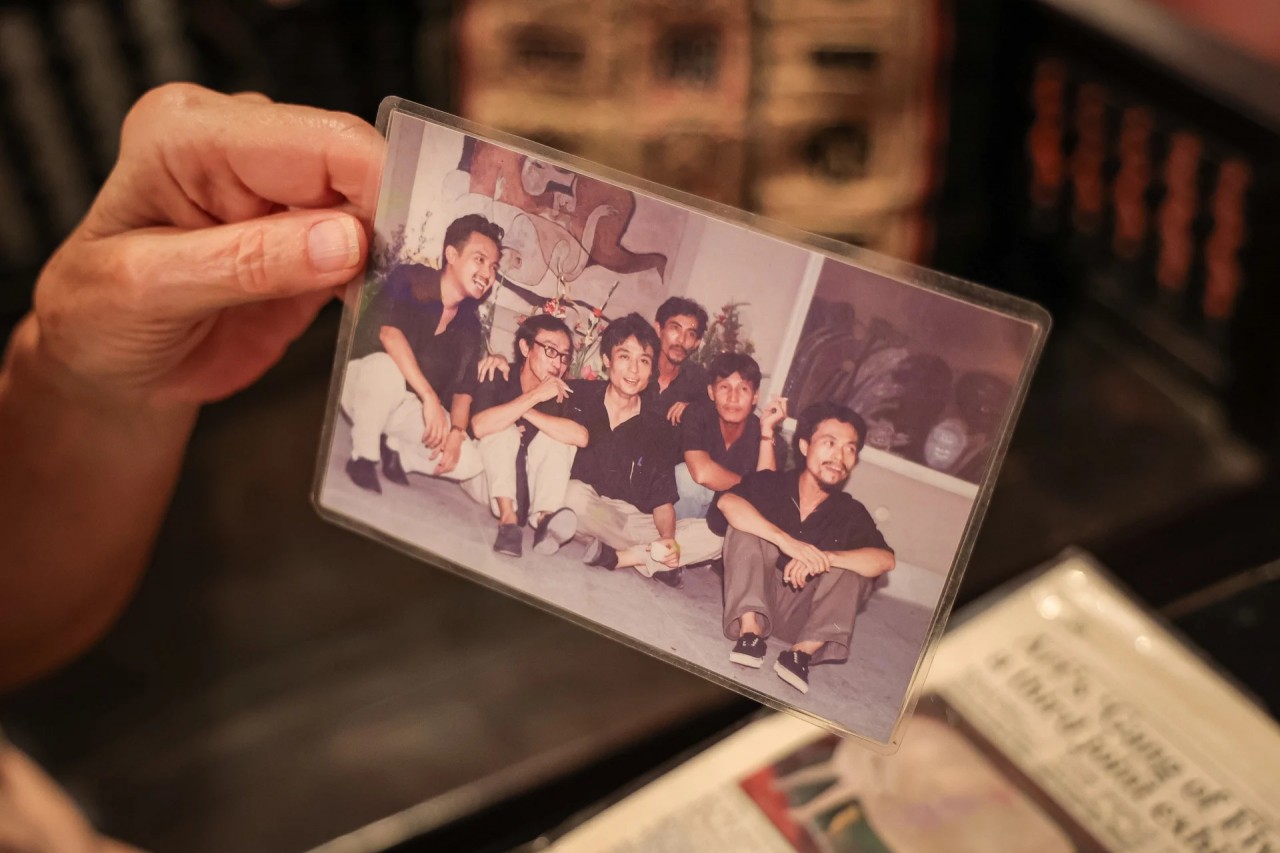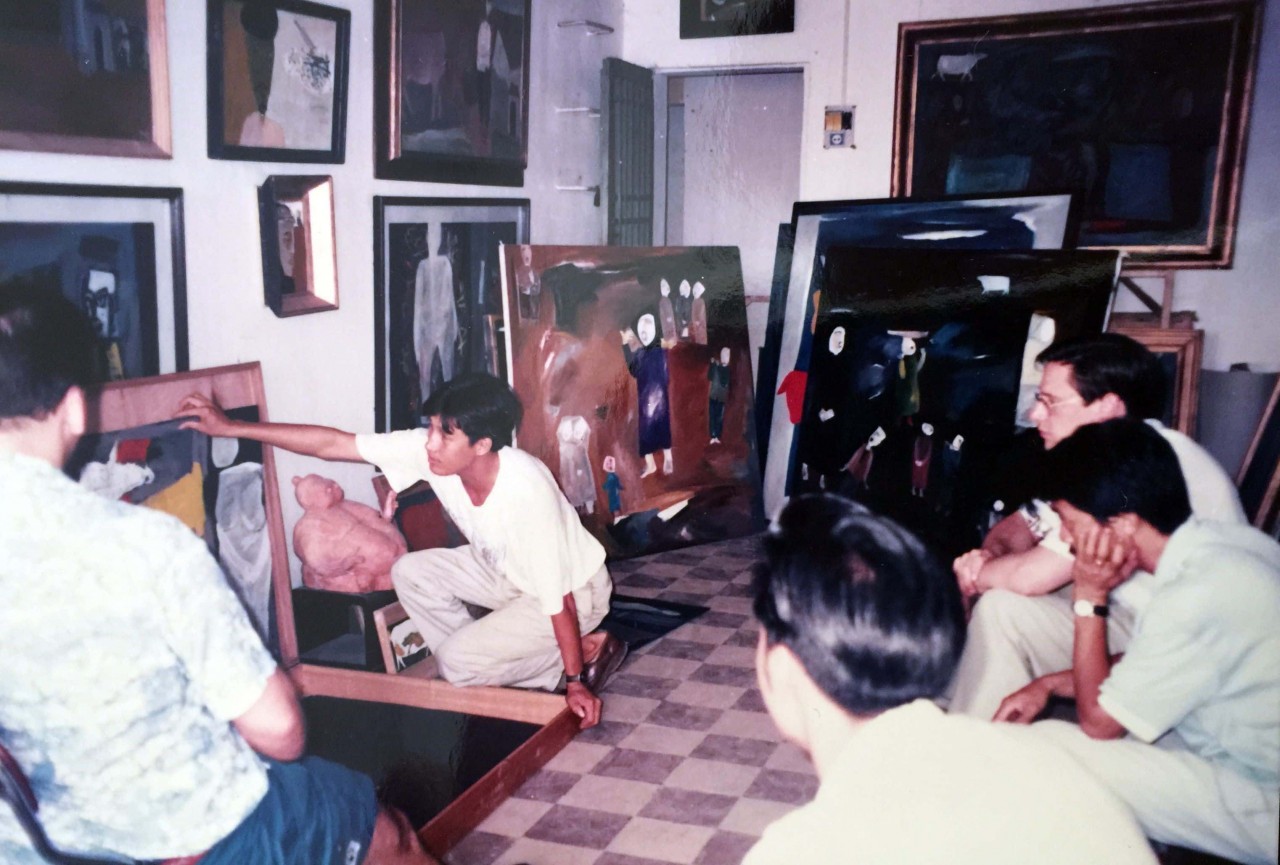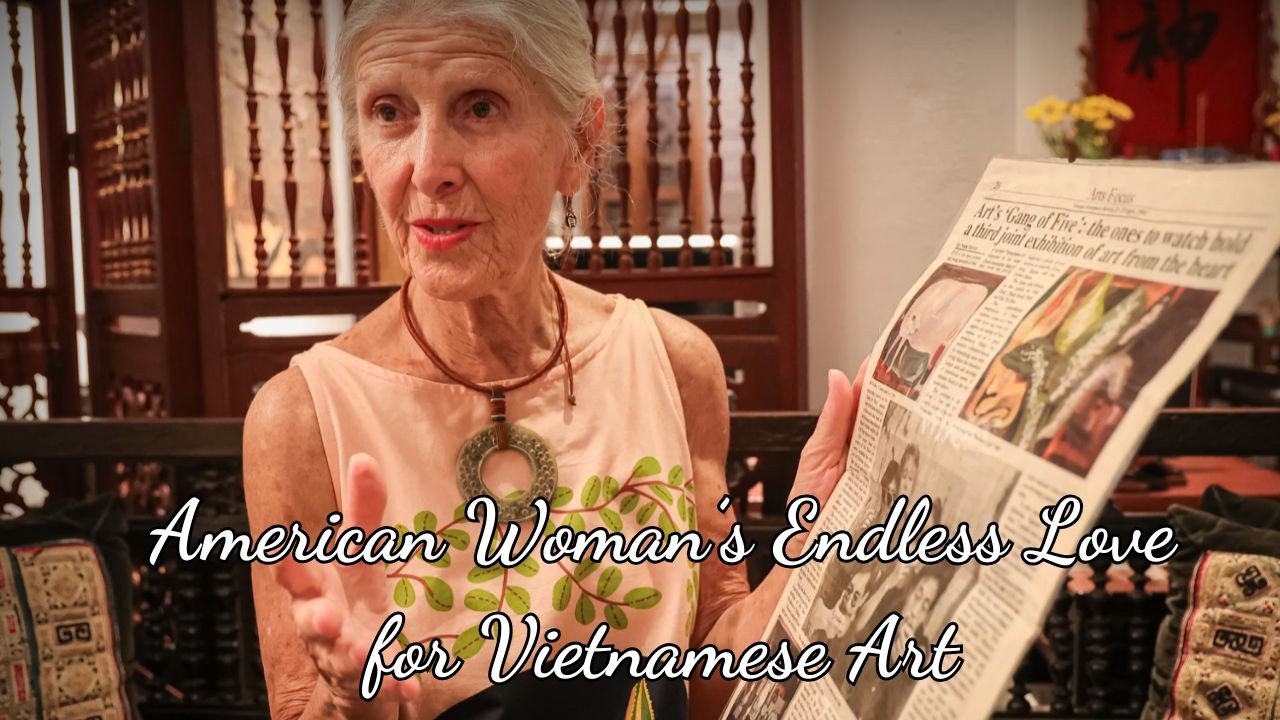
|
 |
|
"I had been living in New York since 1975, then moved to Tokyo in 1984 to live with my husband," shared Suzanne. "However, my husband passed away in 1992. After that, I stayed in Tokyo for another year to reflect on life and seek a new direction for myself." With nowhere to return to after giving up her apartment in New York, Suzanne decided to remain in Asia. She began her journey to find a new passion by traveling through major cities like Shanghai, Beijing, and Bangkok, followed by Hong Kong and Taiwan (China). However, none of these places seemed to touch her heart. "There was no place that truly resonated with me," she expressed. The turning point came in October 1993, when a friend of hers, a producer at CBS News in Tokyo, brought back a copy of the magazine Vietnam Investment Review from a business trip to Ho Chi Minh City. In the August 1993 issue of this magazine, Suzanne was captivated by an article introducing a group of Hanoi artists known as the “Gang of Five”. |
 |
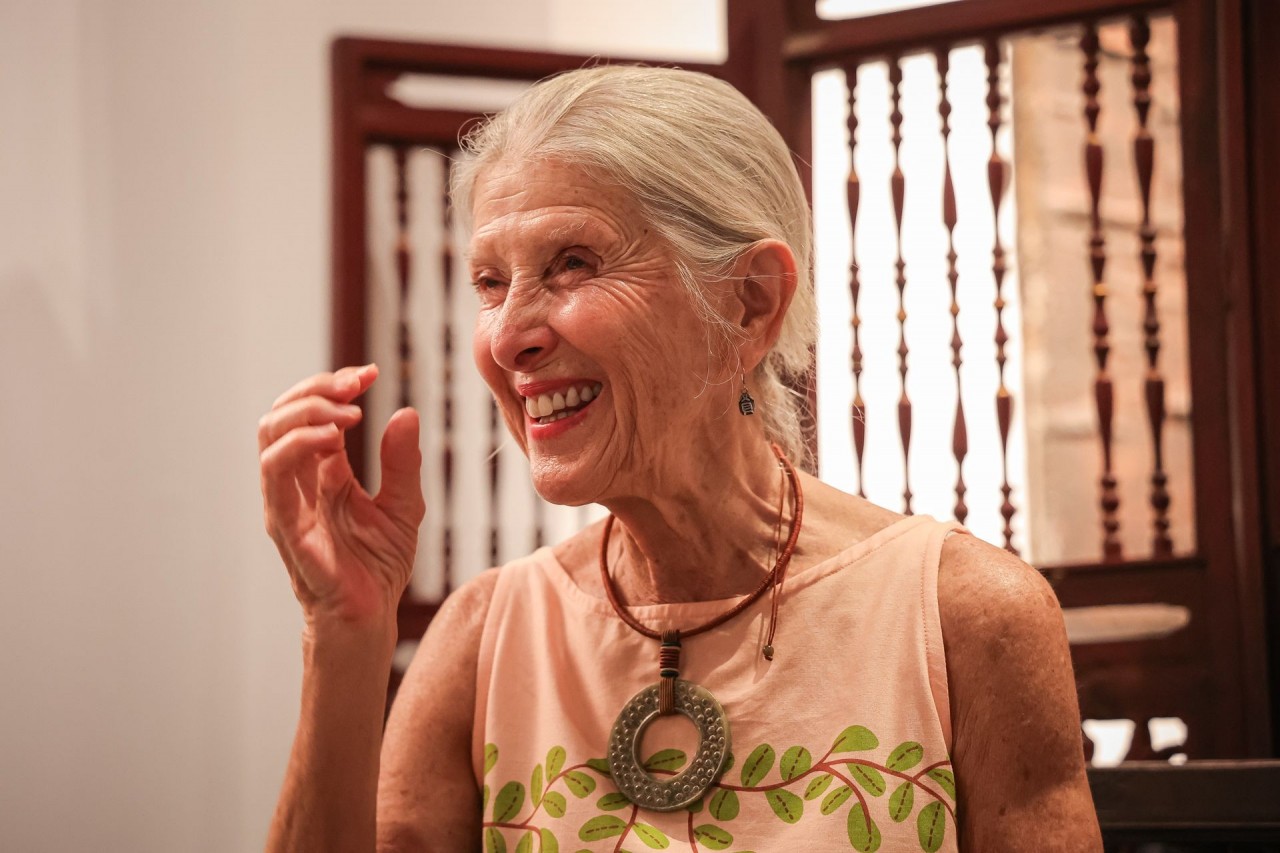 |
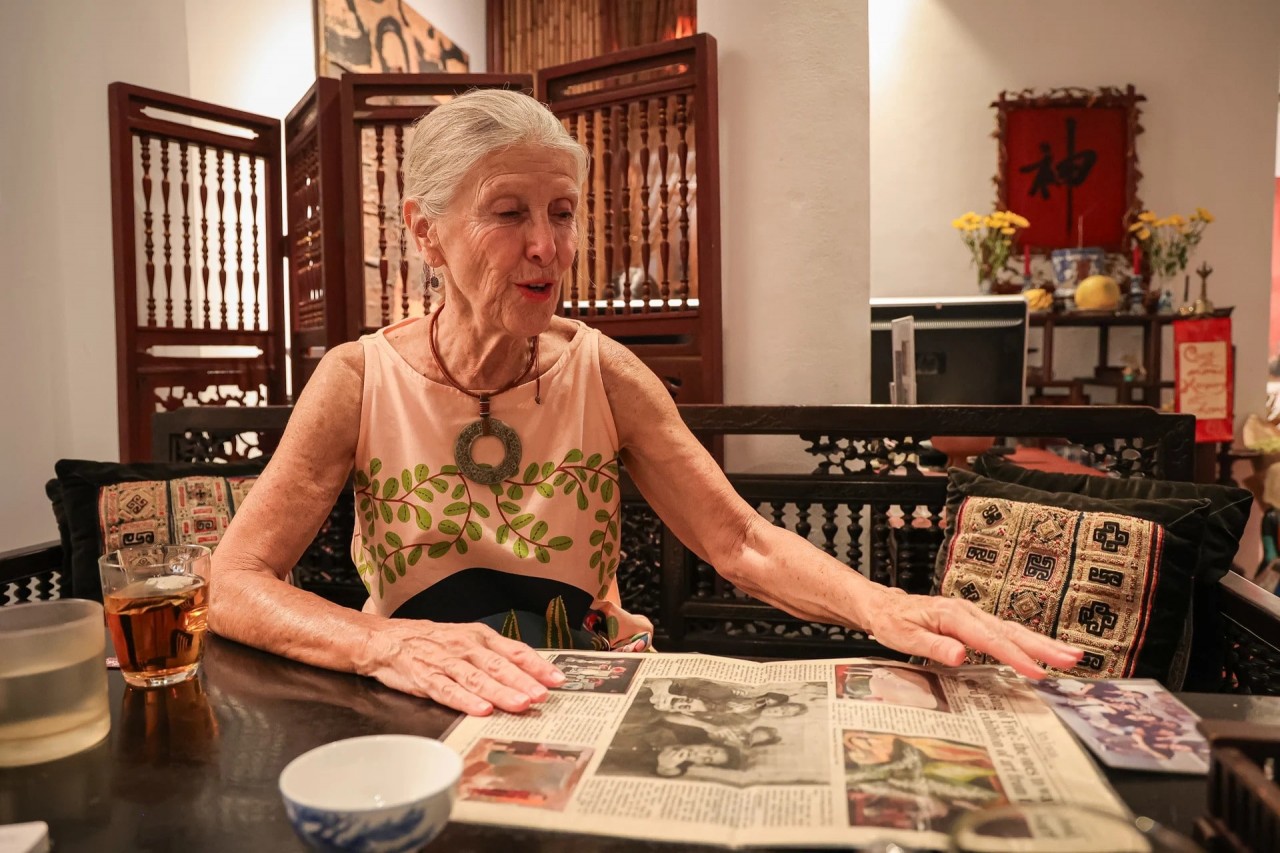
The magazine has been carefully preserved by her for more than 30 years. |
|
"I had studied art history, but as an American, we only knew Vietnam through the painful war," said Suzanne. "So, when I read the article, I found these artists to be truly special. They were only 7-8 years old when the war took place, had to evacuate to rural areas, grew up in hardship, and only when Vietnam gained independence and entered the Doi Moi (Renewal) period did they have the opportunity to express themselves through art." According to Suzanne, these artists found freedom in their art. Their works were strongly influenced by Western artists like Henri Matisse and Vincent van Gogh. "As someone who didn’t know much about Vietnam, I found the works of the “Gang of Five” to be complex and multidimensional. They represented a new generation, daring to dream of better things and eager to integrate with the world after years of war and hardship." She shared that it was these works that sparked a new passion in her and urged her to go to Hanoi. "I thought I could work with these artists and become a bridge for reconciliation between the US and Vietnam through art. Although art is not directly related to the war, it symbolizes progress, faith, and hope for a bright future." |
|
They are prominent names in the Vietnamese art world such as Dang Xuan Hoa, Tran Luong, Ha Tri Hieu, Pham Quang Vinh, and Hong Viet Dung. |
|
With that thought, Suzanne decided to pack her bags and head to Hanoi. "I am now a Buddhist, and we are taught that everything in life is interconnected. So, I believe that my coming to Vietnam was not by chance, but a destiny." The journalist who changed Suzanne Lecht's life was a Swedish woman who had studied arts in the US and had a deep interest in Southeast Asian art. She came to Hanoi to pursue a doctorate and became friends with the ”Gang of Five”. She is now a professor at the School of the Art Institute of Chicago – where many Vietnamese artists have studied – and has curated numerous art projects in Vietnam. It was her article that led Suzanne Lecht to Vietnam. And then, in Hanoi, Suzanne experienced a series of fateful and serendipitous encounters. |
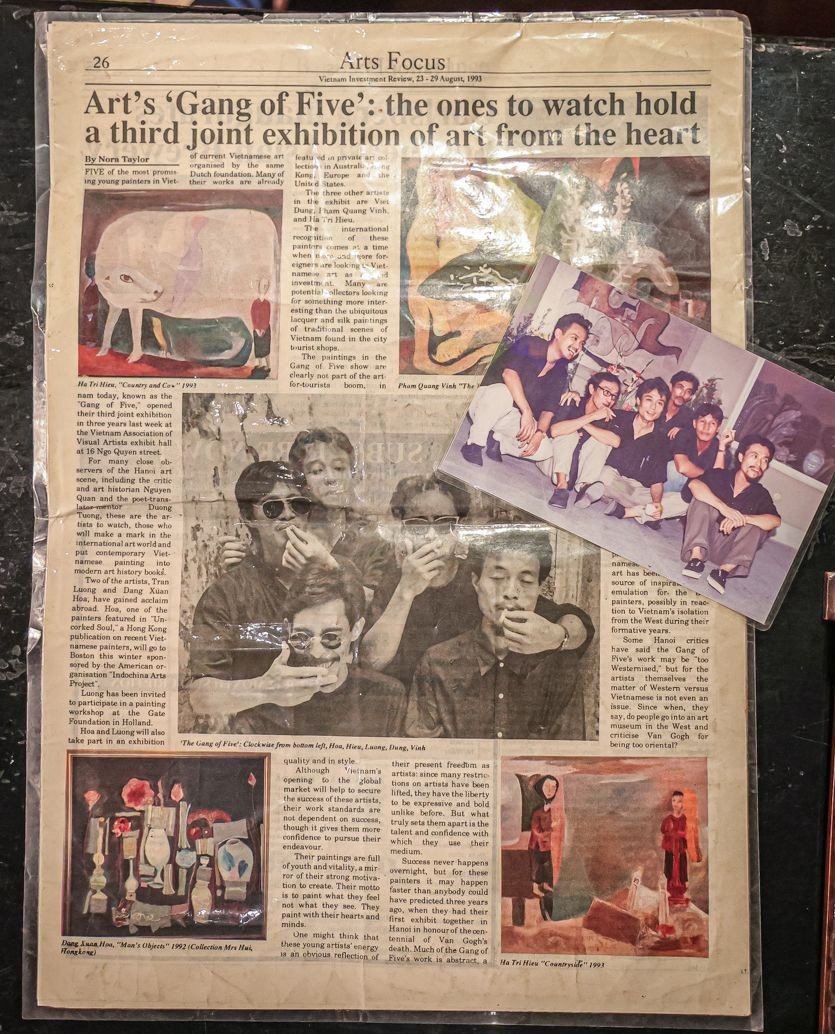
After many years, Suzanne still keeps the Vietnam Investment Review magazine with an article about the Hanoi group 'Gang of Five'. |
|
The “Gang of Five” is a pioneering group of Vietnamese artists, formed in the late 1980s and early 1990s in Hanoi. The group includes painters Dang Xuan Hoa, Tran Luong, Ha Tri Hieu, Pham Quang Vinh, and Hong Viet Dung. The group stood out in the context of Vietnam undergoing significant social and economic changes following the 1986 Doi Moi policy opening the country. The “Gang of Five” represented a breakthrough in contemporary Vietnamese art, transcending the constraints and limitations of traditional art. They created diverse styles and expressed strong personal identities, reflecting deeply the social, cultural, and political changes in the country during this period. Their works are often abstract, rich in color and emotion, blending traditional and modern elements. The group has had many international exhibitions and made significant contributions to the development of contemporary Vietnamese art, laying the foundation for many younger generations of artists. |
 |
|
On a cold January day in 1994, Suzanne Lecht set foot in Hanoi for the first time. She hadn’t expected Hanoi to be so cold with constant drizzle. With nothing written in English and wandering through many streets, she eventually found shelter in a small hotel near the Hanoi railway station. Looking for a meangiful experience, she found herself visiting Ho Chi Minh's Mausoleum. "It was an emotional experience due to the solemnity of the Mausoleum," shared she. Afterward, she visited the Ho Chi Minh Museum. On the top floor, she admired photographs and documentaries about Hanoi in the 1920s and 1930s, witnessing the complexity and diversity of Hanoi's culture. Suddenly, a young Vietnamese man approached her. "I was so happy because he was the first person who could speak English to me here," she recalled. The young man introduced himself as Phuong, who had left Vietnam at the age of seven and moved to New Zealand. Though they had just met, they felt like long-lost soulmates, talking about their dreams. When Suzanne shared that her dream was to live and work with artists, Phuong’s face lit up. "Why don't you come to have lunch with us?" Phuong asked with a warm smile that seemed to melt the cold of Hanoi. He said he was living with painter Pham Quang Vinh, a member of the ”Gang of Five”, the group of artists whose work had inspired Suzanne to come to Vietnam. Thus, on her first day in Vietnam, a fateful encounter with Phuong led Suzanne to meet her inspiration in Hanoi. At Phuong and Vinh’s home, the three of them had a cozy lunch, and after the meal, they eagerly took her to a studio to meet Ha Tri Hieu and the remaining members of the “Gang of Five”. |
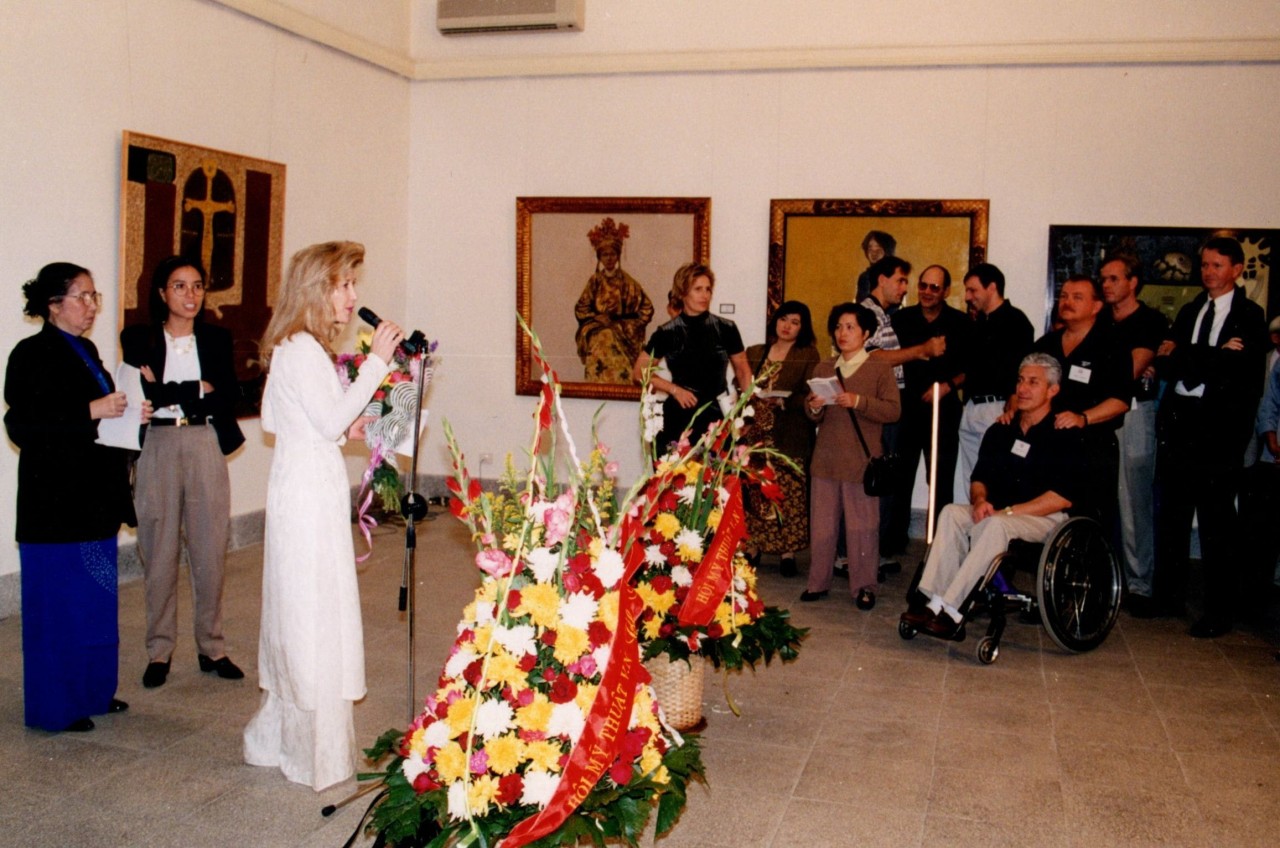 |
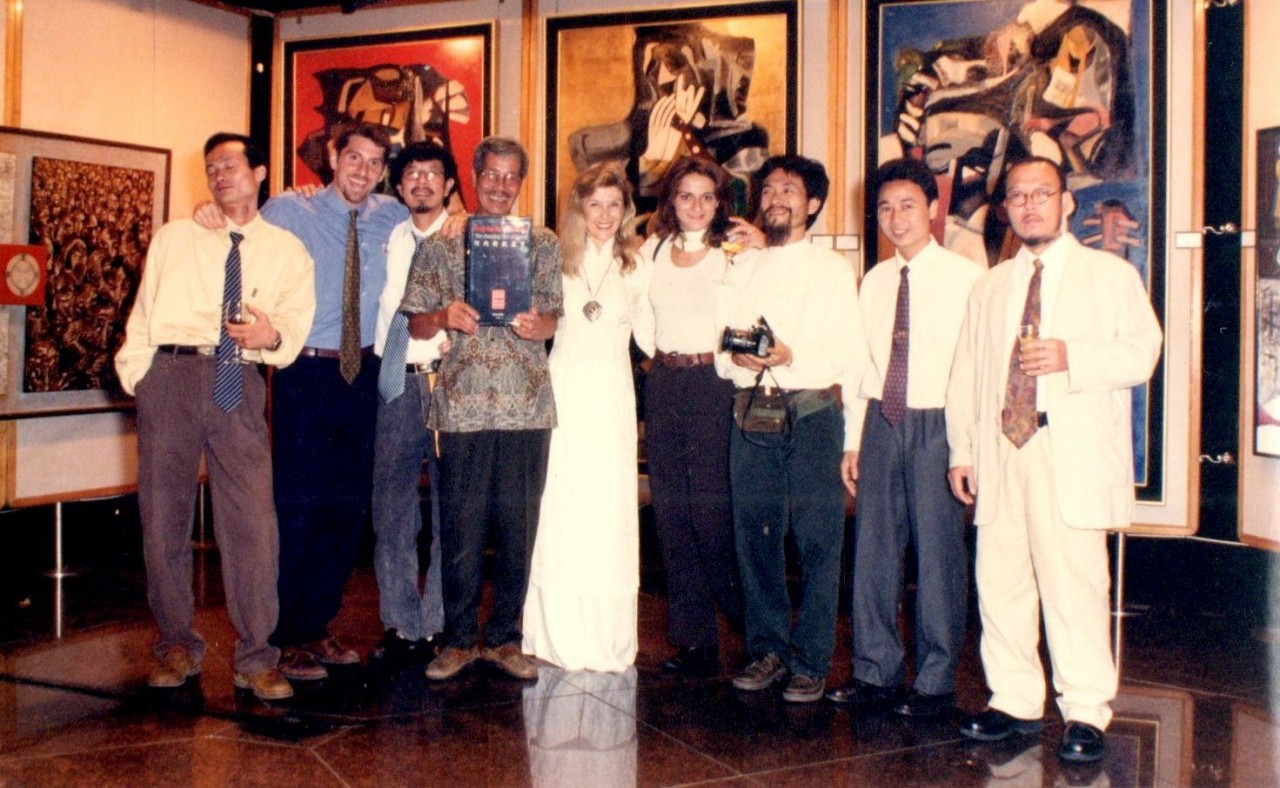 |
|
"Americans often say, 'By chance, how lucky.' But in Vietnam, people usually say, 'My story is destiny; I was born to be in Vietnam,'" Suzanne Lecht shared. For a foreigner like her, ”Gang of Five” represented a breakthrough, a symbol of a new Vietnam, more open to the world than ever before. In 1994, diplomatic relations between the US and Vietnam had not yet been established as they are today. Every month and a half, Suzanne had to leave Vietnam to renew her visa. However, after she became acquainted with the 'Gang of Five,' she was introduced to Vu Giang Huong, a female painter and then Chairwoman of the Vietnam Fine Arts Association. The shared passion for art between the two women bonded them, and Giang Huong decided to become Suzanne’s sponsor, allowing her to remain in Vietnam. She even introduced Suzanne to a position as an advisor at the Vietnam University of Fine Arts. “From then on, I could stay in Hanoi permanently, learning many new things, and my love for this place became more profound than ever,” she shared. Suzanne decided to hire Phuong as a translator. Every day, Phuong would pick her up to meet Pham Quang Vinh, and they would take her to meet many artists, writers, and poets from Hanoi. |
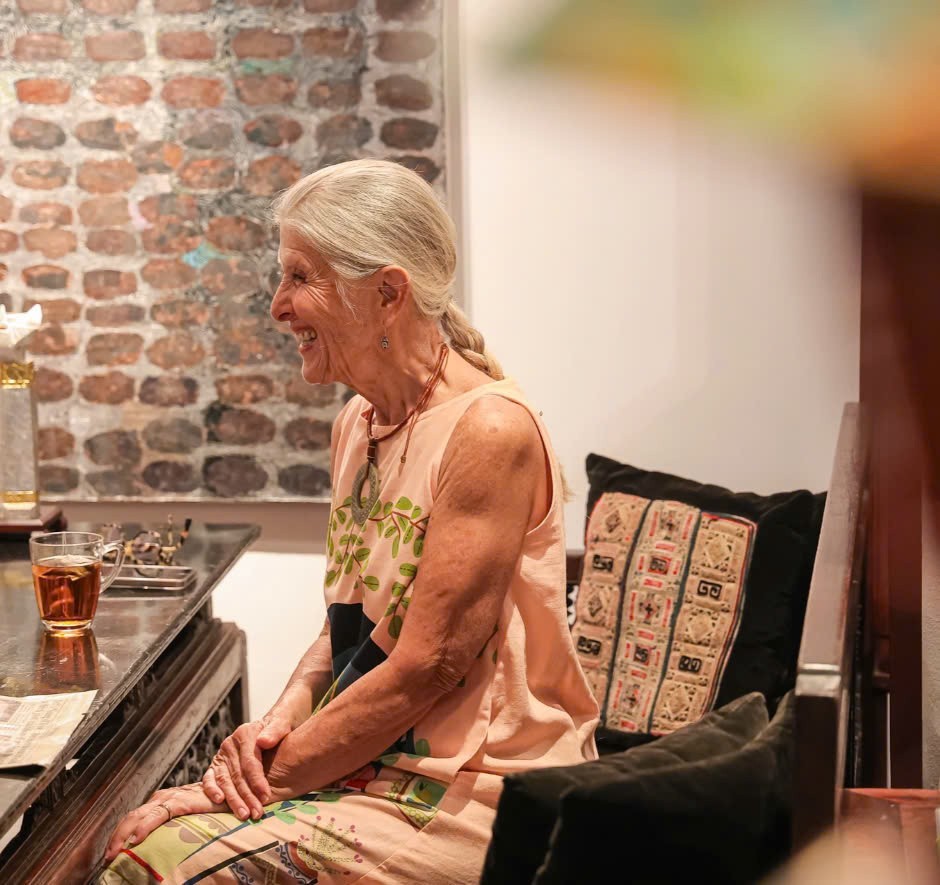 Retelling old stories, Suzanne always laughs because of the beautiful memories. Retelling old stories, Suzanne always laughs because of the beautiful memories. |
|
They did not limit themselves to the city. Together, they went to Bac Ninh to watch the traditional Quan ho singing and enjoyed the sunrise at the Huong Pagoda. “As a foreigner, I felt truly grateful. At that time, I didn’t realize how fortunate I was. I was learning about Vietnamese culture through Vietnamese artists themselves. It was truly a perfect learning process for me,” she expressed. Within three months of living in Hanoi, Suzanne purchased a Jeep from Ho Chi Minh City and drove it back to Hanoi. With this vehicle, she, along with artists like Pham Quang Vinh and Ha Tri Hieu traveled to provinces like Dien Bien Phu and Son La. Back then, during the summers, artists were required to travel to remote areas to complete drawing assignments for the Vietnam University of Fine Arts. |
|
Suzanne's photo was taken at artist Ha Tri Hieu's studio, with Pham Quang Vinh and Michael Davis present. |
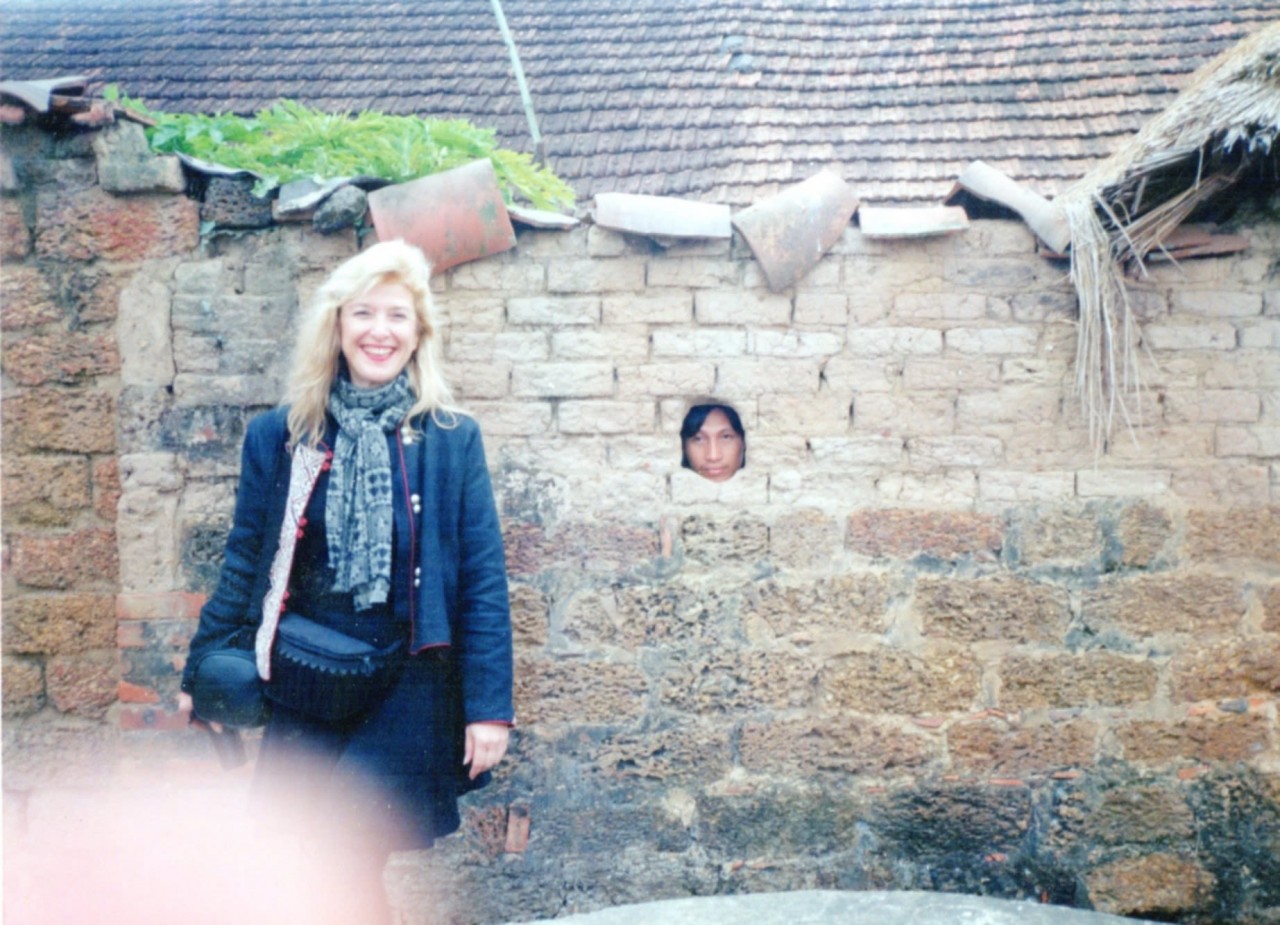
Suzanne and artist Ha Tri Hieu at Phu Lang pottery village, Bac Ninh province. |
|
In 1978, Pham Quang Vinh was assigned to Mai Chau to complete a drawing assignment, where he met a White Thai family living in a stilt house. With the Jeep ready, Vinh proposed a trip with Suzanne to revisit this family after more than 15 years apart. Upon arriving, Vinh decided to buy the stilt house and told Suzanne, “I will bring this house back to Hanoi and place it on my family’s land.” “Vinh’s words overwhelmed me,” Suzanne recalled. “I said, ‘Isn’t that wonderful? Why don’t we do this project together? Instead of me renting from a stranger, why can’t I live in this house and pay rent to you? Let’s make it big, with an exhibition space on the first floor, an art studio on the second, and place the stilt house on the top third floor.’ Without hesitation, Vinh agreed, and I have lived here since the house was completed in 1996.” |
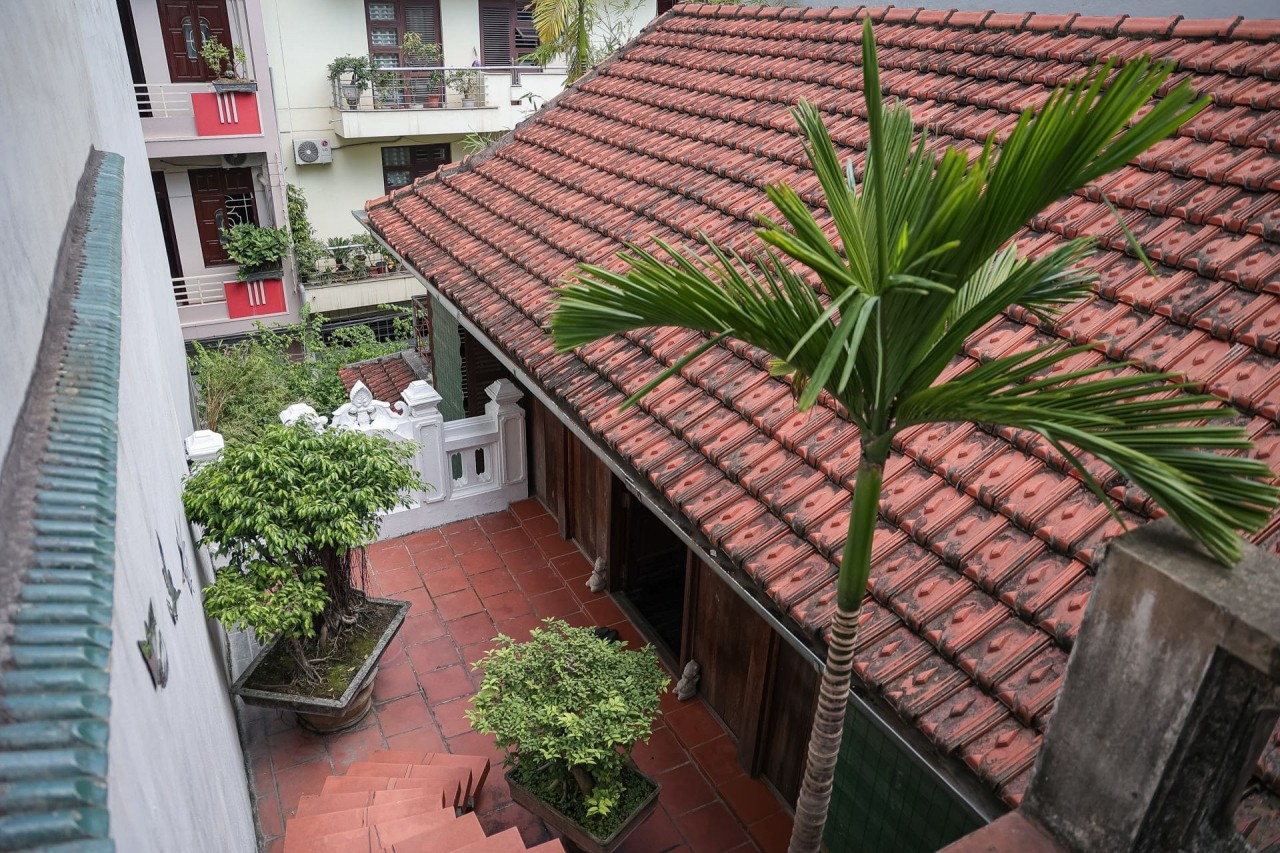
The stilt house of the White Thai people is located on the top floor of the Art Vietnam Gallery. The tiled roof replaces the thatched roof to withstand the weather. |
|
Building the house was arduous and time-consuming, taking two years to complete the project. From laying the foundation to erecting pillars to dismantling the stilt house in Mai Châu and transporting its parts to Hanoi, just reassembling the stilt house took over a month. Their three-story house was finally completed in May 1996. “Finding materials for the house was also challenging. We designed the doors and windows ourselves. Everything was handmade by various artists,” Suzanne shared. “Made of wood and exposed to Hanoi’s climate, the house often needs repairs and maintenance, which requires quite a bit of effort. But I truly love this house full of memories.” |
|
Over the years, the house, built from the friendship between American and Vietnamese friends, has stood firm, much like the bond and harmony they share through art. The house has gradually been filled with countless artworks, deeply infused with Vietnamese culture. Today, it is known as the Art Vietnam Gallery, located on Yet Kieu Street, Hanoi, and one of the most influential galleries in the contemporary Vietnamese art community. This place functions as a cultural bridge, introducing both Vietnamese and international artists to the public through unique and creative exhibitions. The gallery does not only exhibit paintings but also includes other art forms such as sculpture, photography, and installation art. With a mission to explore and honor the diversity of contemporary Vietnamese art, the Art Vietnam Gallery has become a familiar destination for those who love art and wish to delve deeper into the country’s creative culture. |
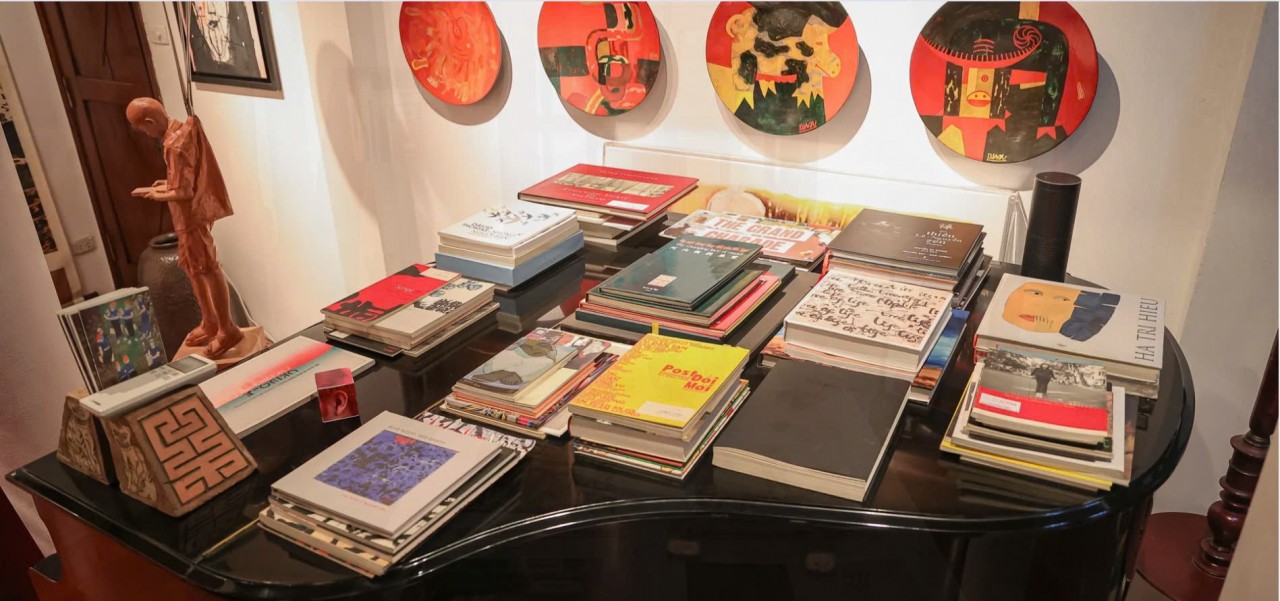 |
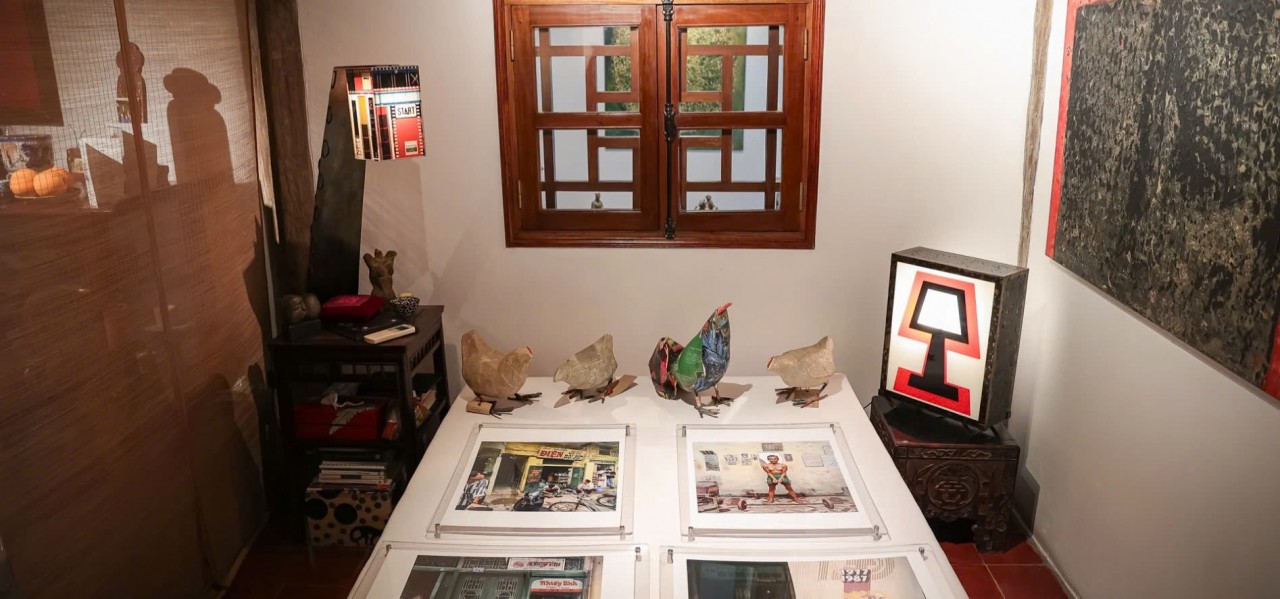 |
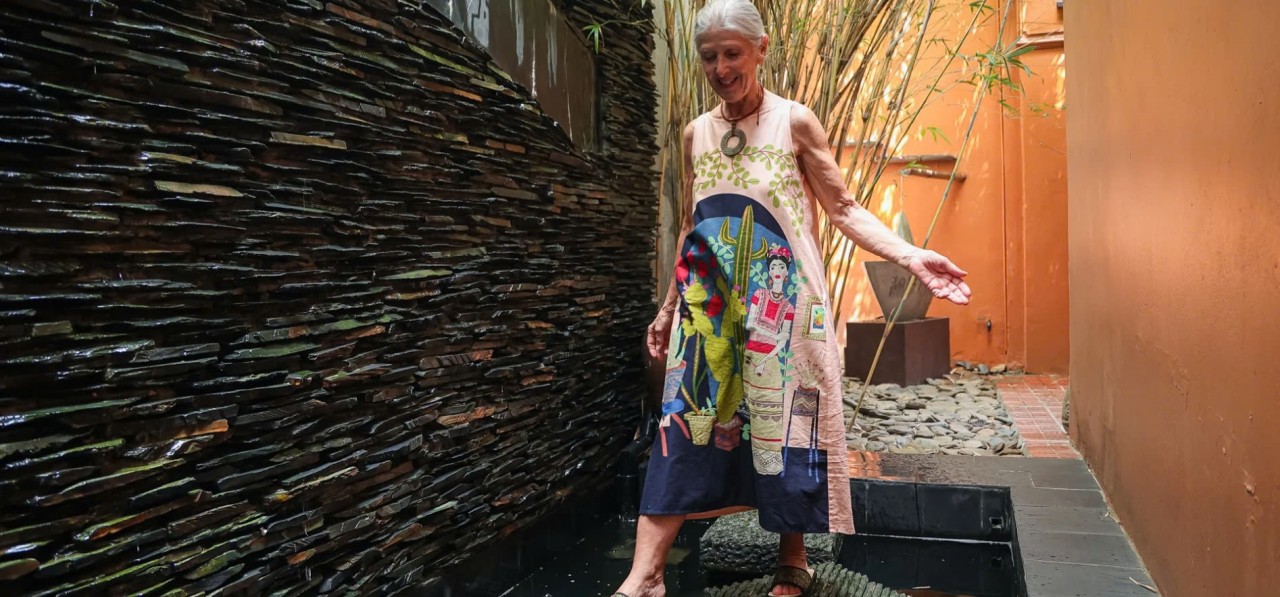 |
 |
|
Having lived in Hanoi for nearly 30 years, Suzanne Lecht has built a deep relationship with the people and culture of this city, considering it her second home. “The Vietnamese people are very warm and friendly,” she shared. “I have a wonderful housekeeper who has been with me and the house for many years. Her daughter is now studying at the Vietnam University of Fine Arts. Her husband is a carpenter, always diligently maintaining and repairing the wooden details of this house.” “The people of Hanoi are the reason I want to live in this city. They are amazing: intelligent, funny, enjoying a balance between work and play, tough yet a bit stubborn,” she said, smiling. She also expressed her admiration for the resilience of the Vietnamese people. “I deeply admire the Vietnamese for their toughness, especially considering you have been through wars and harsh living conditions. I have never heard a Vietnamese person complain. It’s like, ‘Alright, it happened, we’ll just unite and move forward.’ That’s a beautiful way of life.” |
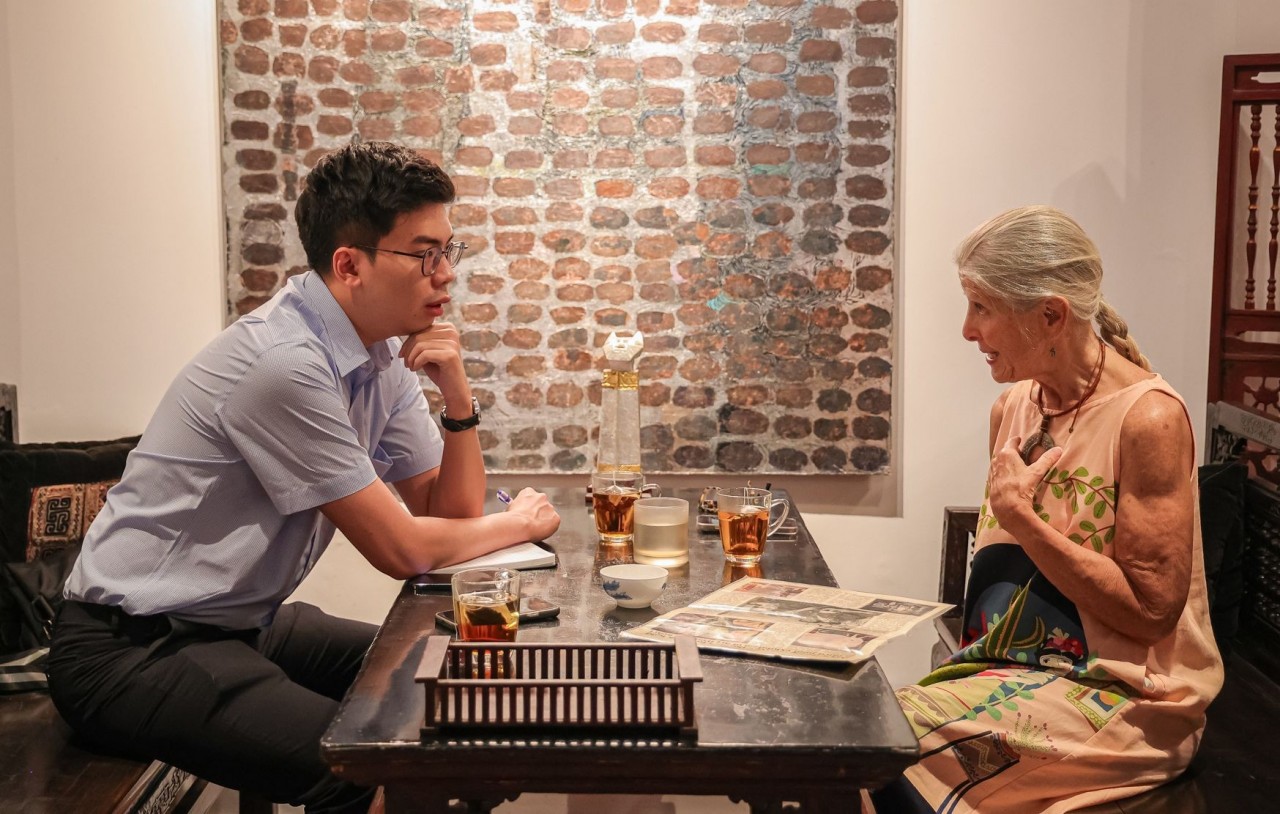
Suzanne Lecht talked with Nhan Dan Newspaper's reporter, on the 70th anniversary of Hanoi's Liberation Day (October 10, 1954-October 10, 2024). |
|
“However, art is the reason I came here. It’s the ‘anchor’ that keeps me in Hanoi,” she emphasized. “I feel very lucky and privileged to have worked with Hanoi’s artists. They have given me a new life, helping me learn so much about a culture very different from what I knew. Hanoi is truly fascinating and rich in history!” Looking back at Hanoi’s development, Suzanne is astonished. “When Pham Quang Vinh and I bought this house, the surrounding area was just dirt roads, with buffaloes wandering around. Now, everything has changed with concrete roads, high-rise buildings, overpasses, and highways. It’s remarkable how much progress Vietnam has made.” “When I arrived here in 1994, the neighborhood’s electricity would be cut off at 9 p.m. every day to save energy. No one had computers or phones, and most people rode bicycles. I had to go to the post office to send letters to my family and schedule phone calls. And look at it now, the progress in 30 years is truly impressive.” As a longtime fan of Vietnam, Suzanne understands the strong patriotism of the Vietnamese people. “Hanoi’s infrastructure development has been swift. Additionally, Vietnam’s economy is now one of the strongest in Southeast Asia. So, you have every reason to feel proud as Vietnamese.” “I love Hanoi and plan to stay here forever. This is already my home,” she affirmed, adding that she would continue organizing art exhibitions in Hanoi, as it has become a part of her. Even though she is 76 years old, many young Vietnamese artists have gone abroad and returned home, and she wants to work with them as a mentor, passing on her knowledge after nearly 30 years of working and bonding with Hanoi. Continuing to connect art and people in her way—Suzanne Lecht. |
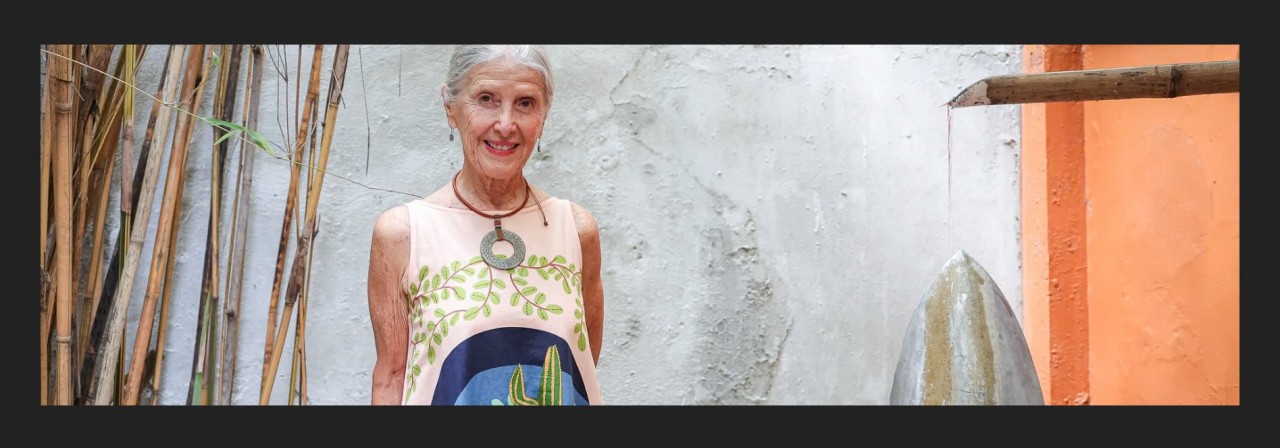 |
|
Publication date: October 10, 2024 Organized by: Phạm Trường Sơn Content and presentation: Phan Thạch Photos: Hà Nam Source: Nhân Dân Newspaper https://special.nhandan.vn/nguoi-phu-nu-my-va-tinh-yeu-bat-tan/ |
